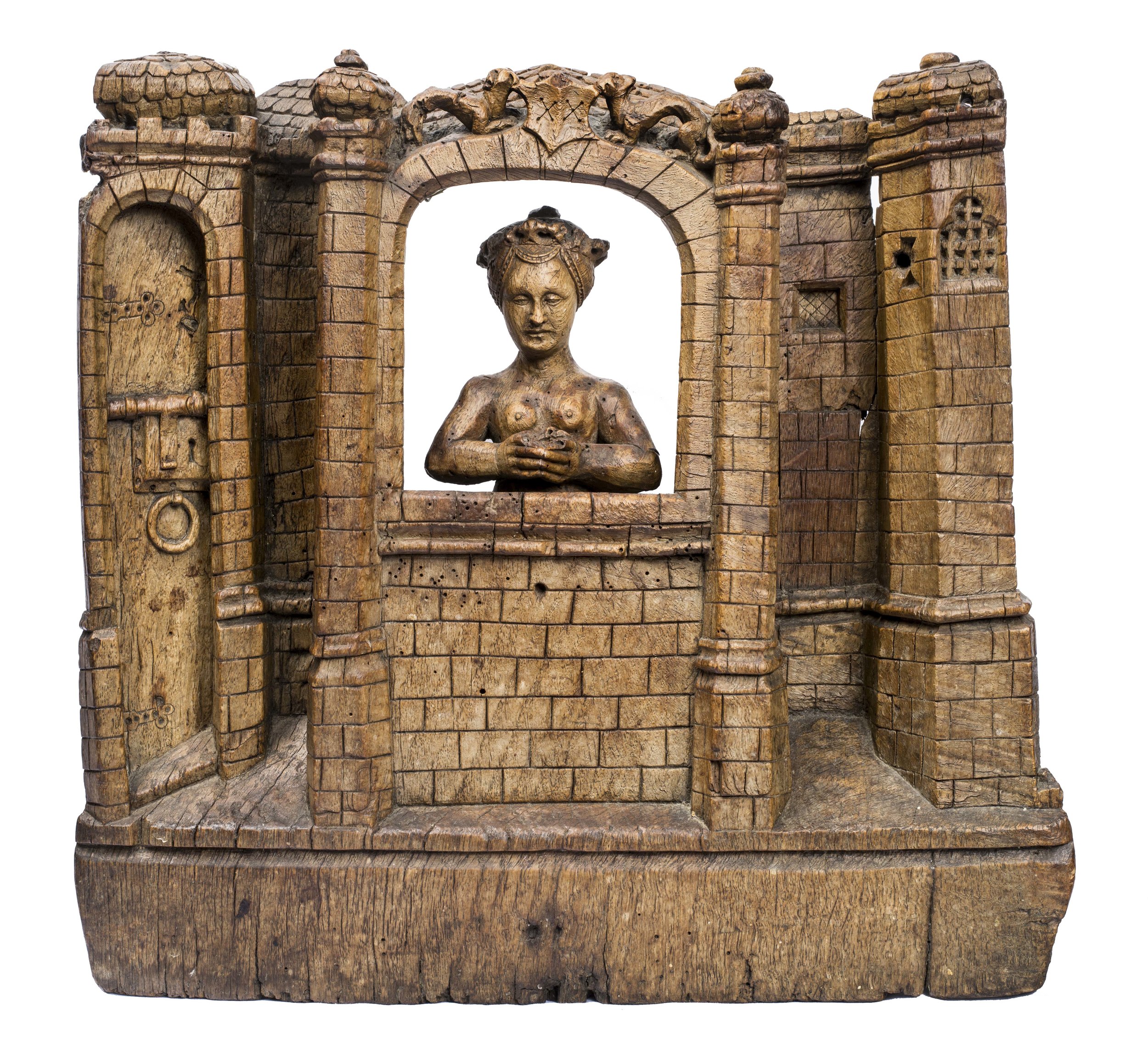FLEMISH SCHOOL, Circa 1500
Saint Barbara in Her Tower
wood sculpture
height 16 inches (41 cm.), width 16 inches (41 cm.), depth 4 inches (10.7 cm)
PROVENANCE
Joanna Booth, London until 1997 from whom purchased by
Private Collection, Washington, D.C. until the present time
This charming wood sculpture depicts Saint Barbara ensconced in her tower, wearing only an elaborate headdress. She is believed to have lived in Asia Minor in the Third Century. Her story is retold in the Golden Legend. Her father, a heathen nobleman called Dioscurus, shut Barbara in a tower to discourage potential suitors, as she was very beautiful. The tower originally had two windows, but while her father was away, she had a third added. She also smuggled a priest into her sanctuary and had herself baptized a Christian. Upon Dioscurus’ return, Barbara revealed her conversion and the meaning of the three windows, symbolic for the Father, Son and Holy Ghost. Dioscurus was so enraged that he denounced Barbara to the Roman authorities. They tried to shame her by parading her through the town naked. By divine intervention a fog rolled in and cloaked her condition. Even after torture, Barbara refused to recant. Eventually the Romans ordered Dioscurus to kill Barbara. He beheaded Barbara, but a moment later Dioscurus was struck by lightning and died. [1] Saint Barbara is the patron saint of architects, masons and other builders, as well as miners, sailors and artillerymen. Her name is further invoked in prayers of protection from lighting. [2]
Saint Barbara is typically represented fully clothed holding or standing next to a replica of her tower. In our engaging sculpture, she is depicted naked gazing out of the main tower window. To her right is a heavily padlocked door, and on her left the other two windows. In early religious works, sequential events were at times combined into one consolidated image.
[1] James Hall, Dictionary of Subjects and Symbols in Art, Harper and Row Publishers, New York, 1974, pp. 40 – 41; and Jonathan Young, “A Day to Honor Saint Barbara” in Santa Barbara News Press, November 30, 1997 at www.folkstory.com.
[2] James Hall, op.cit., pp. 40 – 41; and Neal Graffy, Historic Santa Barbara, Historical Publishing Network, 2010, p. 14.
